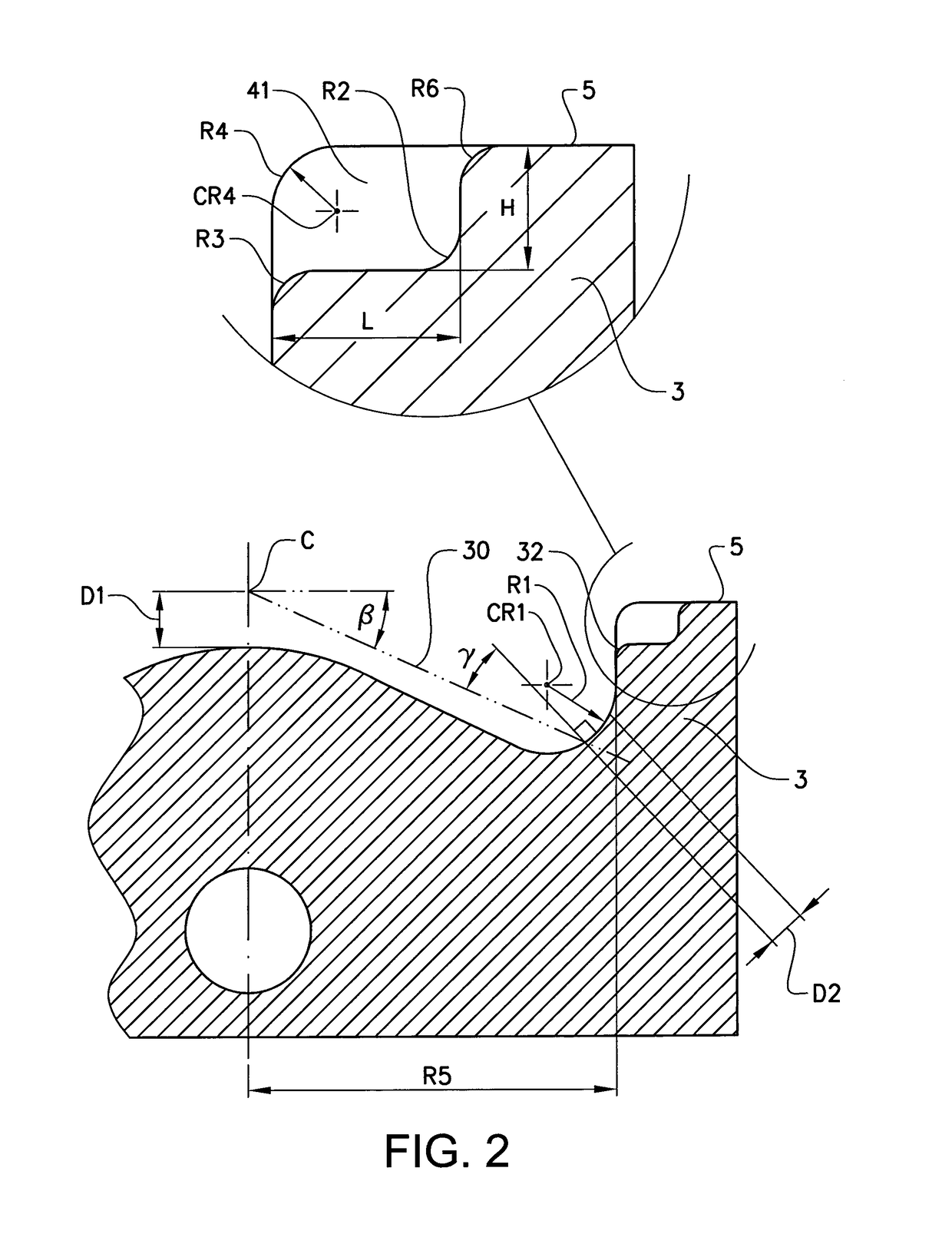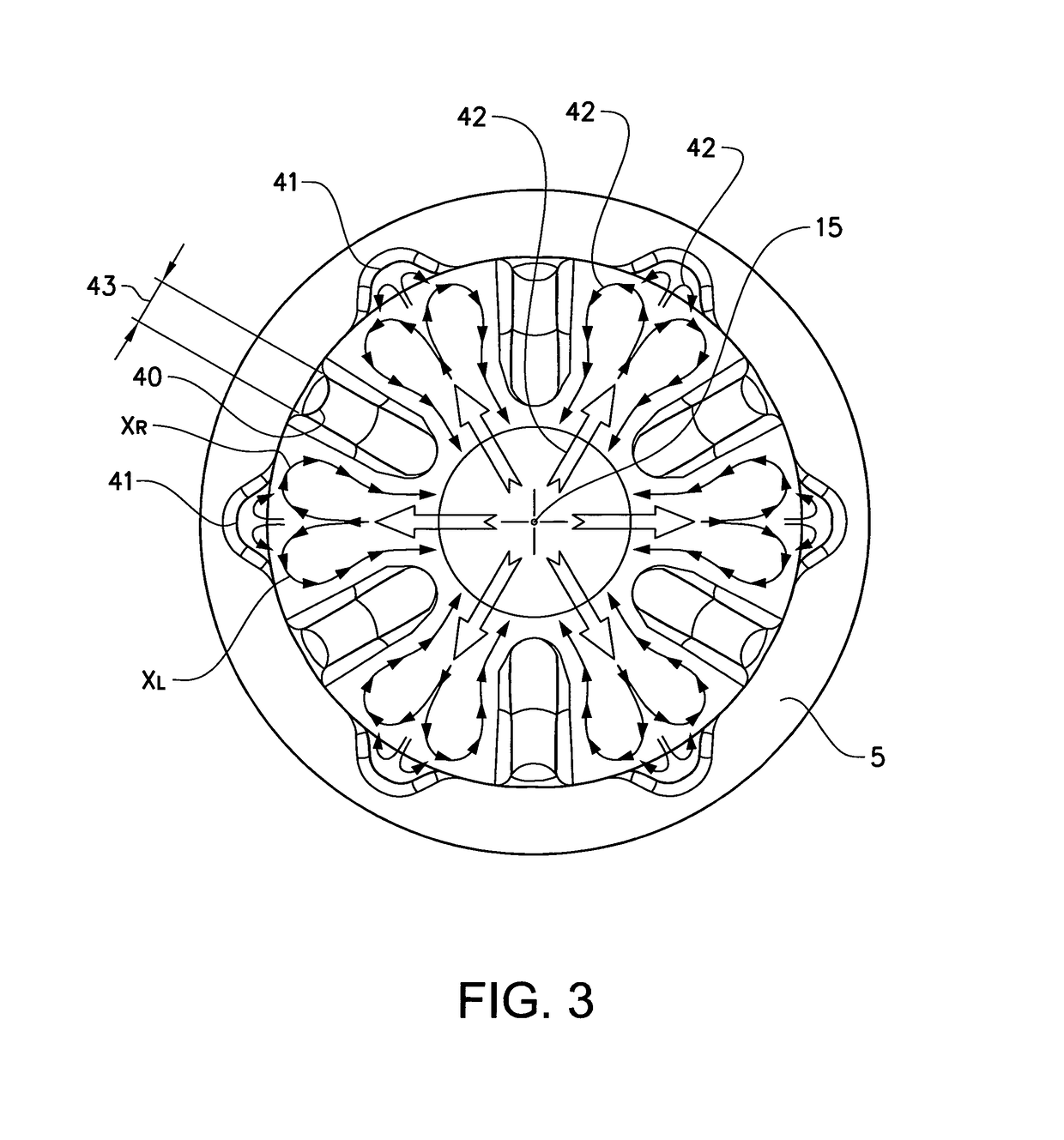Piston for a cylinder of a combustion engine
a technology for combustion engines and pistons, which is applied in the direction of pistons, combustion engines, machines/engines, etc., can solve the problems of reducing thermodynamic efficiency, reducing the thermodynamic efficiency, and causing high soot formation
- Summary
- Abstract
- Description
- Claims
- Application Information
AI Technical Summary
Benefits of technology
Problems solved by technology
Method used
Image
Examples
Embodiment Construction
[0035]The present invention will now be described more fully hereinafter with reference to the accompanying drawings, in which an exemplary embodiment of the invention is shown. The invention may, however, be embodied in many different forms and should not be construed as limited to the embodiment set forth herein; rather, this embodiment is provided for thoroughness and completeness. Like reference character refer to like elements throughout the description.
[0036]Firstly, attention is drawn to FIG. 1 which illustrates the inventive piston 3 arranged in a cylinder 2 of an internal combustion engine 1. To understand the unique physical characteristics of the combustion provided by means of the inventive piston 3, FIGS. 1 and 2 illustrates the various physical characteristics or parameters provided in a cylinder arrangement and in the inventive piston 3. Hence, FIG. 1 will incorporate a description of the combustion process including parameters of both the inventive piston 3 as well a...
PUM
 Login to View More
Login to View More Abstract
Description
Claims
Application Information
 Login to View More
Login to View More - R&D
- Intellectual Property
- Life Sciences
- Materials
- Tech Scout
- Unparalleled Data Quality
- Higher Quality Content
- 60% Fewer Hallucinations
Browse by: Latest US Patents, China's latest patents, Technical Efficacy Thesaurus, Application Domain, Technology Topic, Popular Technical Reports.
© 2025 PatSnap. All rights reserved.Legal|Privacy policy|Modern Slavery Act Transparency Statement|Sitemap|About US| Contact US: help@patsnap.com



